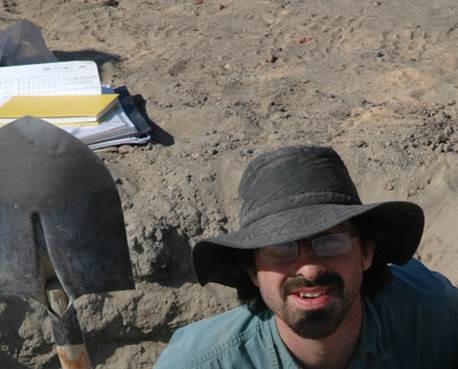On Monday, 24th April 2023, our TU Earth & Environment Group welcomed guest speaker, Professor Mike Rogerson of Northumbria University whose talk entitled ‘When and Why does it rain in the Sahara? (on orbital timescales)’ addressed his ongoing NERC-funded stalagmite palaeoclimate research in Tunisia and Libya.
According to Mike, the Greening of the Sahara which entails conversion of large, currently hyperarid areas into grassland during warm phases of the northern hemisphere, is one of the most spectacular examples of past climate change we have. Previous studies have revealed that the Sahara was not always the sun soaked hyperarid landscape with iconic rolling sand dunes that much of it is today. Instead, there is evidence that it was once much greener.
Future changes in Earth’s hydroclimate under greenhouse gas forcing are notoriously difficult to predict yet people living in global drylands such as along the desert margins of the Sahara, are incredibly vulnerable to changing water availability and at risk of acute humanitarian crises under human caused climate change.
Climate models used to predict future change over large parts of African and West Asian dryzones tend not to ‘converge’ which means that different climate models subject to the same climate forcings will give different answers as to whether the region will be wetter or drier in the future. Globally, models seem to predict that wet regions will get wetter and dry regions will get drier but how accurate is this? Also, according to Mike, this pattern does not match our understanding of the Sahara under previous warm periods such as the mid-Holocene around 5000 years ago when a greener Sahara prevailed.
Mike is leading a large team of researchers from the UK, Tunisia, Libya, Switzerland, Germany, and Austria, to achieve a step-change in the confidence of climate forecasts for the northern margin of the Sahara by examining the representation of rainfall in Tunisia and Libya general circulation models, and testing how consistent this representation is with new records of rainfall built from stalagmites from Tunisian and Libyan caves. Cave stalagmites preserve a record of past temperature and rainfall in their mineral chemistry as they grow. Depending on their size and growth rate, they have the potential to give us insight into seasonal scale climate variability many thousands of years into the past.
Mike gave an interesting and engaging talk that explained why this is such a difficult – and important – bit of climate science to solve, and provided us with an update on the team’s progress so far.
Mike directs research in Northumbria’s Geography and Environmental Sciences Department and has a wide range of research interests himself with a particular love for karst processes and landscapes. Mike and I have worked closely on several projects over recent years including my National Geographic Explorer project seeking to reconstruct West African Palaeoclimate and as founding members of ‘Karstaways’, a North England research collective of karst and cave researchers. You can learn more about Mike and his work here https://www.northumbria.ac.uk/about-us/our-staff/r/michael-rogerson/.
written by Dr Lisa Baldini


